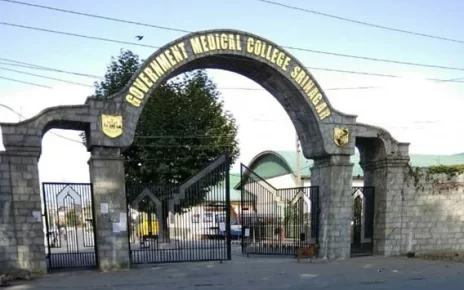Down The Memory Lane
Volume 12 Issues 4 April, 2022

Editor, MINDS Newsletter,
Assistant Professor, Department of Psychiatry All India Institute of Medical Sciences, (AIIMS) Raipur, Chhattisgarh, Indian
Follow me Twitter
The fruition of psychiatry training went paralleled the history of psychiatry and was influenced by the policies and political conditions of the time. Historically, psychiatry training was confined to the mental hospitals, and integration of psychiatry services was encouraged at various levels of the health system, especially after the mental hygiene moment, resulting in the development of multiple psychiatry institutions and courses.
Historically, The Bethlem Hospital can be considered the first modern mental hospital built in London in 1247. However, asylum history can be traced back to the 4th century AD in Byzantium and Jerusalem, followed by Arab, Baghdad in 705 AD and Cairo in 800 AD. (1,2)
The mentally ill person’s first dedicated treatment centre was at “Dhar” in Madhya Pradesh during the 15th century (3). However, the first Asylum was established in Bombay in 1745, followed by Calcutta in 1784 (4). Several asylums opened during the colonial period at Patna, Dacca, Calcutta, Berhampur, Cuttack, Poona, Dharwar, Ahmedabad, Ratnagiri, Hyderabad (Sind), Jabalpur, Banaras, Agra and Bareilly, there were 31 mental hospitals in India by the year 1947.
Parallelly modern medical education also took its shape in India; the landmark decision by Lord William Bentick, the then Governor-general, to establish medical colleges in place of medical schools is noteworthy here. Subsequently, in 1835, two medical colleges were established, one in Calcutta and the other in Madras. The course duration was four years, extended to five years in 1845 (5). The Indian Medical Council was constituted to keep the standards of medical training in the year 1934. The first MD. Psychiatry course was started by Medical College at Patna in 1941 and the first MD. The candidate was the late Prof. L.P. Verma, a Past President of the Indian Psychiatry Society.
Post independent psychiatry training flourished due to various factors. Increased numbers of treatment options facilitated outpatient-based management, recommendations by the Bhore committee, 1946, commencement of the Mental Health Act 1987, and the introduction of the National Mental Health program 1982 (6). Attempts were made to integrate psychiatry training at various levels of health education, and the number of general hospital psychiatry units (GHPU) significantly increased and became the primary site for psychiatry training.
In 1955, Diploma in Psychological Medicine (DPM) and Diploma in Medical Psychology was started at the National Institute of Mental Health and Neuro Sciences, Bengaluru (then the All India Institute of Mental Health).
1956, Dr Luvia Taylor Gregg, an American, designed 80-100 hours of undergraduate psychiatry curriculum integrated with medicine at All India Institute of Medical Sciences, New Delhi. Subsequently, GHPU were started at the King George Medical College, Lucknow, in 1958 and at the Post Graduate Institute of Medical Education and Research (PGIMER), Chandigarh, under the guidance of Prof NN Wig. The psychiatry training was further strengthened after the Medial Council Act of 1956 and the implementation of Competency-Based Medical Education (CBME) in 2019(7).
Psychiatry training gained a lot of attention at the undergraduate and postgraduate levels in the last decade. Specially postgraduate training offers a broader range of courses. The super speciality, post-doctoral fellowship and other courses have been added. More than 700 institutions currently provide postgraduate training; there are even more than forty super speciality DM seats across the country supplying DM courses in addiction psychiatry, geriatric psychiatry, geriatric mental health, and child and adolescence psychiatry.
References-
- Mills J. The history of modern psychiatry in India, 1858-1947. Hist Psychiatry [Internet]. 2001 Oct 24;12(48):431–58. Available from: http://journals.sagepub.com/doi/10.1177/0957154X0101204803
- Bhugra D. Psychiatry in ancient Indian texts: a review. Hist Psychiatry [Internet]. 1992 Jun 25;3(10):167–86. Available from: http://journals.sagepub.com/doi/10.1177/0957154X9200301002
- Sharma S, Varma LP. History of mental hospitals in Indian sub-continent. Indian J Psychiatry. 1984 Oct;26(4):295–300.
- Raghavan DV, Tejus Murthy AG, Somasundaram O. Treatment of the mentally ill in the Chola Empire in 11(th) -12(th) centuries AD: A study of epigraphs. Indian J Psychiatry [Internet]. 2014 Apr;56(2):202–4. Available from: http://www.ncbi.nlm.nih.gov/pubmed/24891715
- CS P. M.C.I. Silver Jubilee Souvenir. In: History of the Medical Council of India. New Delhi: Medical Concil of India; 1959.
- Sood M, Sharan P. A pragmatic approach to integrating mental health in undergraduate training: The AIIMS experience and work in progress. Natl Med J India [Internet]. 24(2):108–10. Available from: http://www.ncbi.nlm.nih.gov/pubmed/21668057
- National Medical Comission. Competency based under graduate curriculum [Internet]. 2019. Available from: https://www.nmc.org.in/information-desk/for-colleges/ug-curriculum/g


It a crispy write up for medical students